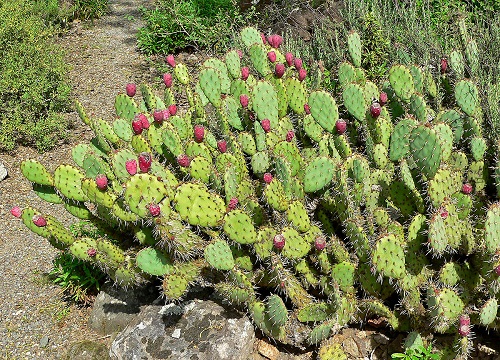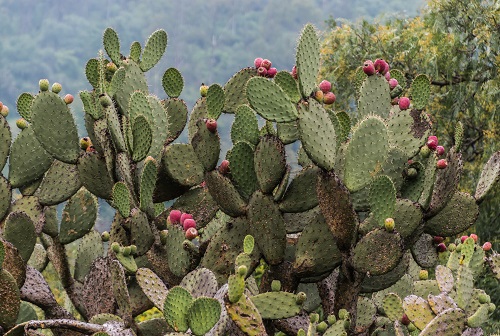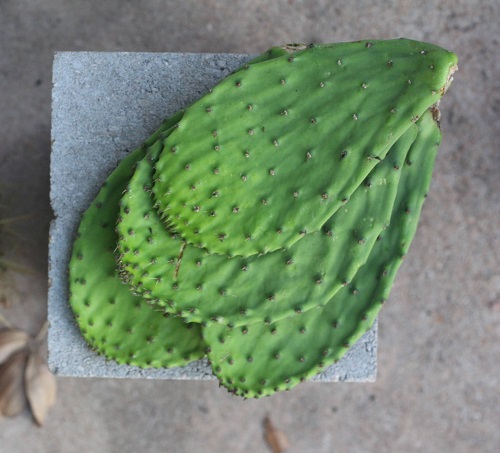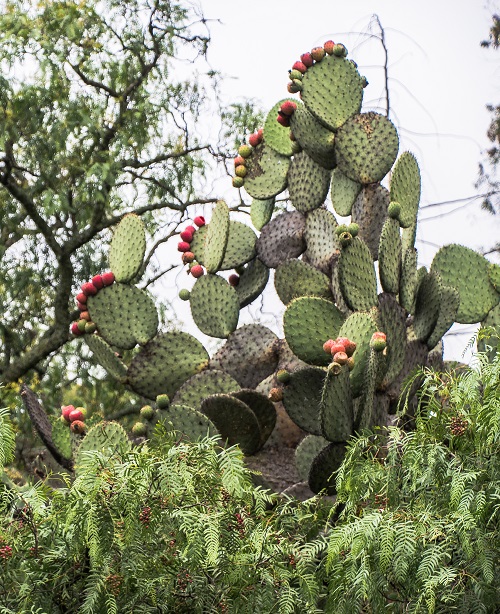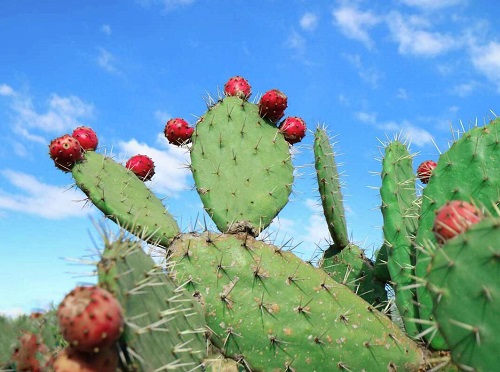Xoconostle Fruit Benefits top its tangy and refreshing taste, making it the ‘must have’ plant in your cacti collection!
You may have heard of cactus, but have you ever encountered the intriguing Xoconostle Fruit? This unique, tangy specimen isn’t just another exotic delicacy; it’s a powerhouse of nutrition with a distinct flavor profile!
How to Grow Monstera Deliciosa Fruit | Mexican Breadfruit Plant Care
Xoconostle Fruit Information
Xoconostle fruit, often called sour prickly pear, belongs to the cactus family, Cactaceae. It’s native to Mexico and some parts of Central America.
This small, spiky fruit may not look appealing at first because of its thorns, but don’t let that fool you! Its skin is green and bumpy, protecting a juicy, vibrant pink flesh inside. When you cut it open, you might notice a fresh, tangy smell that hints at the tart taste inside.
Speaking of taste, xoconostle is quite sour, making your taste buds tingle with its zesty flavor. It’s like a mix of lemons and green apples, and some people even say it’s a bit like sour candy! What’s really cool about xoconostle is its unique characteristic – it’s packed with vitamin C and antioxidants, making it super healthy.
Botanical Name: Opuntia joconostle
USDA Zones: 8-12
12 Best Zone 7 Fruit Trees
Propagating Xoconostle Fruit
For propagating xoconostle fruit, you can use seeds or pad cuttings. Using pads is the best and easiest way to grow more xoconostle plants.
Cut a healthy pad at the base using a sharp knife. Let the cut end dry and callus over for a few days to prevent rotting.
Once the pad has callused, prepare a pot with well-draining soil. Insert the callused end into the soil. Water lightly, making sure the soil is moist but not waterlogged. Place the pot in a sunny spot, as xoconostle plants love sunlight. Within a few weeks, you should see new growth.
34 Man Made Fruits that Will Surprise You
Choosing a Container for Xoconostle Fruit
To start growing xoconostle, you should use a pot that’s about 8 to 10 inches. If you are starting it from a pad, then a small 5-6 inches pot would be just fine. Make sure the pot has drainage holes at the bottom to prevent waterlogging.
Getting a plant from a garden center would be great if you look forward to a quick harvest. Do ensure to re-pot the plant in a one-size bigger container than the one it came in.
Requirements for Growing Xoconostle Fruit
Sunlight
Xoconostle plants love sunlight and need as much direct sunlight as possible daily (A minimum of 6-7 hours is a must). Place them in a sunny spot where they can soak up the sun.
Soil
You can opt for any good quality cactus or succulent potting mix for the plant. You can also make your own using:
- Coarse Sand: 1 part
- Organic Compost: 1 part
- Perlite or Pumice: 1 part
- Peat Moss: 1 part
Blend them thoroughly to create a balanced, nutrient-rich soil for your xoconostle plant.
20 Sweetest Mango Varieties in the World
Water
Water xoconostle plants when the soil feels dry to the touch. Be careful not to overwater, as cacti like the xoconostle are prone to root rot. Allow excess water to drain out, and never let the plant sit in a water-filled saucer.
Temperature
Xoconostle plants thrive in warm temperatures between 70°F to 100°F (21°C to 38°C). They can tolerate mild cold, but it’s best to keep them in a warm environment, especially during winter.
Xoconostle Fruit Care
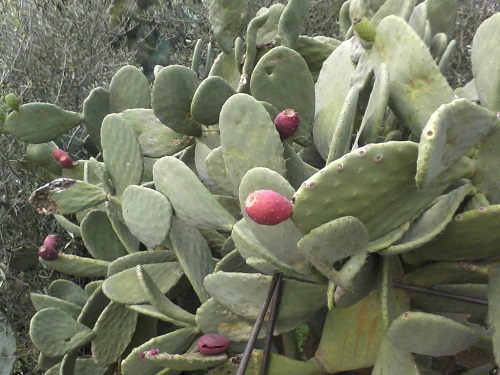
Fertilizer
Go for a 10-10-10 or 14-14-14 liquid fertilizer – this will help to promote both growth and fruiting. Dilute 1-2 teaspoons per gallon of water and use it on the plant once in 4-5 weeks to support its growth on a regular basis.
You can also add 2-4 inches of compost as a top dressing around the plant.
Is Coconut a Fruit Or Nut? Find Out!
Pests and Diseases
Watch out for common pests like aphids and spider mites. If you spot them, wash the plant gently with soapy water to get rid of them. Neem oil spray is also effective and safe for plants.
Root rot can be a concern, especially if the soil is too wet. To prevent it, ensure proper drainage and avoid overwatering. If you notice mushy, discolored roots, remove the affected parts and repot the plant in well-draining soil.
Harvesting Xoconostle Fruit
When to Harvest
Harvest xoconostle fruits when they are fully ripe, usually in late summer or early fall. Ripe fruits have a deep color and a slightly soft texture.
Days to Harvest
Xoconostle fruits typically take about 80 to 100 days to mature after flowering. Keep an eye on the fruit’s color and texture to determine the right time for harvesting.
Steps to Harvest Xoconostle Fruit
- Check Ripeness: Look for fruits with vibrant colors like pink or red. Slightly soft fruits are ripe and ready to harvest.
- Wear Gloves: Xoconostle plants have thorns, so wear gloves to protect your hands.
- Use Pruning Shears: With clean, sharp pruning shears, snip the fruit’s stem close to the main plant.
- Handle with Care: Xoconostle fruits are delicate; handle them gently to avoid bruising.
- Inspect for Damage: Check for any signs of damage or disease. Discard damaged fruits and keep the healthy ones.
- Enjoy or Store: Use the harvested xoconostle fruits immediately or store them in a cool, dry place for later use.
40 Best Green Fruits with Pictures
Xoconostle Fruit Benefits
There are many benefits of Xoconostle fruit, some of which are.
- Antioxidant properties: Xoconostle fruit provides good antioxidant capacity and is a source of bioactive compounds such as phenolics, flavonoids, and tocopherols. The seeds of Xoconostle are believed to have higher antioxidant properties than raspberries, red plums, and strawberries.
- Blood glucose control: Regular consumption of Xoconostle fruit peel can be useful for seric glucose control in individuals.
- Rich in fiber: Xoconostle cactus fruit is rich in fiber, which can help regulate digestion and prevent constipation.
- Source of vitamins and minerals: Xoconostle fruit contains vitamins A, B1, B2, and E, as well as minerals such as calcium, iron, magnesium, potassium, zinc, and phosphates.
- May help reduce cholesterol levels: The fruit may help keep cholesterol levels in check. A study found that consuming Xoconostle fruit can help reduce serum cholesterol levels in rats.
Xoconostle Fruit – FAQs
Q1: Can Xoconostle plants survive in cold climates?
Xoconostle fruits prefer warm temperatures but can tolerate mild cold. It’s best to protect them from frost during winter.
Q2: How often should Xoconostle plants be pruned?
Prune xoconostle plants annually in late winter or early spring to remove dead or damaged branches and encourage new growth.
Blue Dragon Fruit – Is It Real or a Myth?
Q3: Are there any specific pests that Xoconostle plants attract?
While not highly prone to pests, xoconostle plants can attract aphids and spider mites. Regularly inspect the plant for signs of these pests.
Q4: Can Xoconostle fruits be stored for a long time?
Yes, xoconostle fruits can be stored in a cool, dry place for several weeks. However, it’s best to consume them fresh for the most flavor and nutritional benefits.

